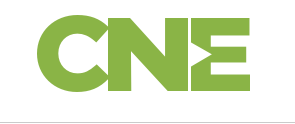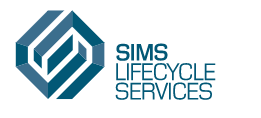IT Asset Disposition (ITAD) Providers Market Guide
Overview
This Market Guide is focused on the end of the asset lifecycle – disposition. Disposition is the process whereby asset owners transfer ownership of unwanted assets to new owners. Those new owners assume responsibility for those assets and refurbish and resell or recycle them. The industry has grown due to a number of factors discussed below, and what was perhaps an overlooked step in the asset lifecycle is now approaching an equal footing with acquisition, deployment, and management.
Disposition, not disposal?
IT’s love for acronyms has caused a bit of an identity crisis for the Disposition industry. Some asset owners may see this part of the lifecycle as “Disposal”, with the connotation of throwing something away. Whilst assets sent for disposition may indeed end up being sent for scrap, ITAD providers are keen to avoid the use of Disposal to describe their activities. Indeed, as the focus on sustainability and the circular economy grows, disposal is seen as a last resort rather than an automatic destination for unwanted hardware.
ITAD Provider Activities
ITAD Providers typically provide some or all of the following services:
- Refurbishment
- Data Destruction
- Resale
- Secure asset logistics
- Regulated recycling to agreed standards
- Management Reporting
- Legal & Regulatory Compliance
The need for ITAD
As technology has become increasingly ubiquitous and consumerised so has the amount of waste generated. A recent survey from the Royal Society of Chemistry1 found over 50% of UK households had at least one unused electronic device, and 45% had between 2 and 5. They estimated at least 40 million unused electronic devices are languishing in UK homes. Clearly, the problem grows significantly when scaled to the enterprise level – Gartner forecast that worldwide spending on hardware will be almost $900bn2 in 2019 and recent research estimates annual eWaste of 50m tonnes, which is expected to more than double in the next 30 years3. If we assume an average asset life of 3 years – reasonable for mobile phones and personal computing devices – that equates to $300bn of assets to be disposed of each year. Microsoft’s vision of a “computer on every desk and in every home” has turned out to be conservative in the light of the smartphone and tablet revolution driven by Apple. In 4 decades we’ve gone from a typing pool and less than one phone line per office worker to the majority of office-based staff having a PC, a phone, and in many cases a smartphone too.
It’s not just about personal devices though – we also need to consider the growth in network and server computing, even in the light of the shift to Cloud, and now the growth of embedded and IoT devices. All this needs to be managed throughout its lifecycle to ensure that assets aren’t wasted and to conform with regulatory requirements.
What’s the value of ITAD to an ITAM team?
ITAD providers help ITAM teams deliver on the following:
- Accurate Hardware Asset Management
- Certified removal of licensed software
- Cost Management
- Risk Management
These deliverables may be integrated. For example, identifying a laptop for disposition enables removal of licensed software and reduces cost by enabling authorised reassignment of that software. An integrated ITAD provider will be able to identify hardware that can be recycled and reissued internally. They may even handle on-site refurbishment and re-initialisation of that hardware. And proven, secure, and guaranteed removal of data stored on devices is critical for compliance with laws such as GDPR.
Clearly, every laptop put back into the internal lifecycle by an ITAD provider reduces technology costs for the organisation, and there is an opportunity for ITAM teams to own and drive that process. Equally, ITAM teams may also add value by supporting stakeholders such as Service Desk or Build teams with ITAD-related tasks.
For strategic ITAM teams, involvement in the ITAD part of the lifecycle can demonstrate value to senior leadership teams concerned with corporate responsibility and sustainability. With an increasing global focus on reducing plastic usage, and consumption in general, this is likely to be an area where ITAM teams can take the opportunity to drive and champion change in established business processes.
Your organisation’s approach to ITAD – other than meeting regulatory and legal minimums – will depend on a number of factors and ITAM teams are well-placed to champion an ITAD programme. Variables affecting how an organisation approaches ITAD include;
- Corporate Responsibility
- Sustainability
- Cost Management
- Consumption Management
- Risk Management
- Resource constraints
For example, your organisation may decide that personal computing devices are replaced every three years, and mobile phones are replaced every two. They may decide that their risk appetite requires that all data-containing devices are destroyed rather than recycled. They may not have a strong commitment to sustainability and may not be gathering metrics on technology consumption as part of their corporate responsibility reporting.
Alternatively, they may sweat assets for as long as possible, only use destruction facilities as a last resort, and track asset recycling as a Corporate Responsibility metric.
The Regulatory Framework
Key regulatory drivers for European businesses include WEEE & GDPR.
WEEE
The requirements of the Waste Electrical & Electronic Equipment Directives have been implemented by all EU member states over the last decade. Whilst WEEE is primarily concerned with requiring producers to recycle products they’ve sold there is also an obligation for consuming businesses to ensure WEEE is treated, recycled, and disposed of appropriately.
GDPR
Whilst WEEE was primarily concerned with ensuring manufacturers met environmental standards, GDPR applies to the end user of technology. The regulation itself isn’t concerned with ITAD but provides fresh justification for ensuring that you deposit your e-Waste appropriately. This is because you have to be able to prove that you’ve carried out your duties as a data controller. In the case of disposition this most commonly means that you can prove that personal data has been removed from assets removed from service. Documentation such as Certificate of Destruction & Chain of Custody records help provide this.
Certifications
Key certifications include:
- ADISA Data Sanitization
- NIST SP 800-88 Compliance
- SERI R2
- e-Stewards
- NAID Data Destruction
- Country-specific WEEE certification programmes
- Additionally, there are industry-specific regulations containing ITAD components including HIPAA, SoX, PCI-DSS, and DoD 5220.22-M.
On that basis, your choice of ITAD provider will be controlled by the regulatory environment in which you operate – you need to know which service providers are able to provide the necessary service & documentation in order to comply with your regulatory constraints.
Inclusion Criteria
In compiling this guide, we have sought to include vendors with global reach – those with operations in multiple territories. Selection of an ITAD provider is defined by your regulatory constraints but also your geography and your company’s approach to asset management, environmental compliance, and sustainability. The market is characterised by large numbers of local players who are clearly beyond the scope of this guide.
Market Overview
The ITAD market is seeing consistent growth at present with forecasts of between 7 & 10% annual growth until the mid-2020s. Given what feels likes accelerating geo-political pressures, particularly around use of plastics, these estimates may be conservative. However, alongside this expected growth, 2019 saw the unexpected exit of Arrow Electronics from this market following a strategic review. In the US in particular this has left a considerable vacuum that remaining market participants are rushing to fill.
Vendors
Apto Solutions

https://www.aptosolutions.com/services/global-logistics
Apto Solutions are headquartered in Atlanta, USA and offer worldwide ITAD services through local partners in LATAM, EMEA, and APAC. They are certified by R2 & NAID. The AptoPulse proprietary application provides asset tracking and full ITAD workflow capabilities, including integration with common ITAM toolsets. Founded in 2001 they are privately held.
Atlantix Global

https://www.atlantixglobal.com/
Atlantix Global are headquartered in Georgia, USA and offer worldwide ITAD services. Founded in 1976, they are now a division of CXTec who themselves specialise in network and voice equipment ITAD services. Atlantix focus on Datacenter decommissioning and logistics and are R2 certified. Parent CXTec is privately held.
Cascade Asset Management

Cascade Asset Management (Cascade) was formed in 1999 to provide comprehensive information technology equipment retirement services for businesses, institutions and municipalities. The company now operates full scale processing facilities in Wisconsin and Indiana and collects between 200 – 400 tons of computers, office electronics, consumer electronics and test equipment each month from sites across North America.
CentricsIT

https://www.centricsit.com/it-asset-disposition/
CentricsIT are headquarted in Atlanta, USA and offer worldwide ITAD services alongside a core competency in third-party IT Maintenance and support. They maintain a worldwide network of partners and engineers with a strong focus on North America and Europe. CentricsIT also provide Datacenter-focused Discovery & Inventory capabilities and are R2 certified. Founded in 2007, they are privately held with estimated revenue of $35m.
CNE Direct

https://www.cnedirect.com/life-cycle-management
Based in Massachusets, USA, CNE Direct specialise in providing full asset lifecycle management services. They work globally with offices, staffed by direct employees rather than partners, in North & South America, APAC, and EMEA. They are privately held with estimated global revenue of $80m and are R2 certified.
Dynamic Lifecycle Innovations

Dynamic Lifecycle Innovations are headquartered in Wisconsin, USA, with processing facilities in Onalaska, WI, and Nashville, TN. Dynamic also maintain a worldwide extensive partner network across all territories. They provide full ITAD services including logistics, reverse logistics, mobility management and refurb/resale.
ERI Direct

https://eridirect.com/services/it-asset-disposition-itad-asset-management/
ERI Direct are based in Fresno, California and claim to be the largest ITAD provider in the US. They provide global services through a wide network of international partners with presence on six continents. They are privately held with estimated global revenue of $100m. They are R2 certified.
Ingram Micro

https://www.ingrammicroservices.com/
California-based Ingram Micro were founded in 1979 and are a very large global wholesale technology distributor with total revenue estimated at $50bn. Formerly publicly listed they are now privately held by a Chinese conglomerate. Ingram differentiate their approach to ITAD with long-standing integrations available for existing ITAM/ITSM toolsets such as Eracent & ServiceNow. They work globally and US-based facilities are R2 certified.
Iron Mountain
![]()
https://www.ironmountain.com/secure-destruction/it-asset-and-media-destruction/it-asset-disposition
Iron Mountain (NYSE: IRM) were founded in 1951. Based in Boston, USA they have over 24,000 employees and operate worldwide. They offer a range of products and services beyond ITAD, including document retention and destruction, digital transformation, and datacenter management. Certifications include eStewards, PCI-DSS, and SOC2.
For more on Iron Mountain SITAD, please see their vendor listing on the ITAM Review Market Place – https://marketplace.itassetmanagement.net/marketplace/it-asset-disposition/iron-mountain-sitad.
ITRenew
California-based ITRenew specialise in ITAD for Datacenter technology. Their solutions are certified by R2 & ADISA and have particular strengths in secure data erasure, having featured in our guide to that market. They are present in North & South America, APAC, and EMEA and are privately held with estimated revenue of $150m.
PlanITROI

Denville, New Jersey-based PlanITROI provide full-service ITAD solutions for end user organisations and OEMs. Their services are certified by R2 and they are a Microsoft Certified Refurbishment partner. PlanITROI have a strong commitment to sustainability initiatives, particularly in education, and have shipped over 6 million affordable refurbished devices with the aim of transforming outcomes for digitally-disadvantaged families. They operate worldwide and are privately held with estimated revenue in excess of $80m.
Sims Recycling Solutions

https://www.simsrecycling.com/reuse/itad/
Sims Recycling Solutions are a division of Sydney, Australia-based Sims Metal Management. Of all the players in this market Sims are by far the longest-established with 102 years of global recycling experience. They have been present in the ITAD market since 2004, with facilities on 6 continents. Revenue is estimated at $500m worldwide. Most facilities are R2-certified, or have similar local certifications. Of all participants in this guide they have the most geographically-diversified operational and customer base.
First-party ITAD partners
Legislation such as WEEE compels electronics producers to offer an e-Waste service. Whilst most producers will choose to contract this service out to 3rd parties such as those listed in this guide, some may choose to provide the service in-house. Potential first-party ITAD partners include Dell, HP, and IBM. In general, these first-party partners will only handle their own devices as part of an ongoing customer relationship. However, this may be an attractive option if your IT supply chain is closely integrated with one of these manufacturers. For example, integration of automatic trade-in, warranty repair, and refurbishment may be desirable and provide a “one stop shop” for your hardware lifecycle.
Conclusion
For many organisations, selecting a geographically-close ITAD partner may be preferred. Logistics are important when dealing with disposal of physical assets and this may also ensure close alignment with local laws and regulations. For single-country operations a local partner may be sufficient, particularly in relatively compact geographies such as Western Europe.
However, this is undoubtedly a global market that benefits from economies of scale, particularly for potential partners such as Sims & ERI who are vertically-integrated with miners and smelters. It is also clear that the R2 standard is levelling the global playing field – virtually all companies included in this guide make R2 certification a key marketing message.
Bibliography
1. Gill V. Millions of old gadgets “stockpiled in drawers.” BBC News. https://www.bbc.com/news/science-environment-49409055. Published August 21, 2019. Accessed October 27, 2019.
2. Gartner Says Global IT Spending to Grow 0.6% in 2019. Gartner. https://www.gartner.com/en/newsroom/press-releases/2019-10-07-gartner-says-global-it-spending-to-grow-06-in-2019. Accessed October 27, 2019.
3. Kinver M. Electronic devices “need to use recycled plastic.” BBC News. https://www.bbc.com/news/science-environment-50046859. Published October 15, 2019. Accessed October 27, 2019.
